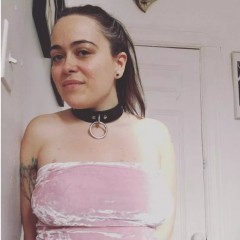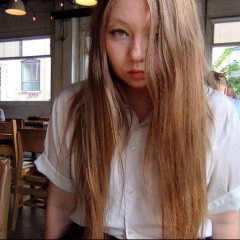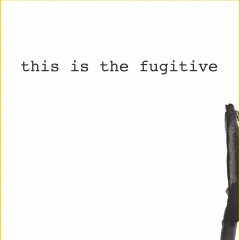An Interview with Cecily Nicholson
“Through fact with texture, atmosphere and affect,” Cecily Nicholson’s poems compose the possible syntaxes and slogans of collective resistance. Her first two books, Triage (2011) and From the Poplars(2015), are palimpsestual and polyvocalic studies of imperial violence’s perpetual encroachment on lands and lives, and articulate how solidarity might be materialized in language and in action against such forces. Her most recent book, Wayside Sang (2017), thinks with the fugitive movements and networks of black diaspora and Indigenous displacement so as to establish a ground for convergence, for communion, for chorus.
The following exchange is an excerpt from a full-length dialogue between Cecily Nicholson and Michael Nardone, which is forthcoming in the Oakland-based journal of poetics Tripwire. Hear Cecily Nicholson read from her new book at the next ZUTIQUE reading with M. NourbeSe Philip and Mercedes Eng. Event details here: https://www.facebook.
Michael Nardone: I’d love to hear what you’ve been up to in Detroit and Windsor while you’ve been writing Wayside Sang.
Cecily Nicholson: The book runs through Windsor to Detroit. The cities are twinned in a way, but it’s always been about Detroit for me. I’ve been going there for decades now. When I was young, I went just a couple times, but later, kept getting called to visit. Part of that evolves out of limited narrative I have around my birth father’s movement. He was a travelling musician, among other kinds of work, and he was often crossing that border, at that place, although I didn’t know that until later in my life. I’ve needed to think about and spend more time in that space to gain a better sense of it, and of myself there.
In Vancouver, we certainly have a lot to face in terms of the cost of living and the idea of affordability, but we sure have resources when it comes to art production. There’s so much infrastructure that’s threaded through by the province, by the state, and by the municipality, and that is actively a part of how art work and art world conversations occur in this locale. It’s not to say that Detroit doesn’t have government funding influences—the private foundation model does seem to be much more prevalent—however, there is this real dearth of infrastructural support, right through to a lack of good public transit. What I’ve witnessed over the years has included some really humble and humbling practices, examples of community, incredible collaboration, and use of materials, the rise of lost and derelict and things broken, refashioned, with social and non-capitalist purpose. And being in a majority-black city, it means that almost everywhere you look, there’s people that can see me. I’m a mixed, light-skinned black Canadian citizen, I think through my mobility and privileges—including the history of my education and diction—yet I feel freer there than in Vancouver. It’s confusing. I feel a debt to the city. It seemed necessary to finish this recent book there, to let a neighborhood suffuse the last bit of process as I wrote by an open window during one long summer month, resting, where Detroit meets Hamtramck.
MN: From the Poplars reads, for me, as a site-specific work in that it is focused on Poplar Island, a small island near the delta of the Fraser River, close to Vancouver. Is Wayside Sang similarly site-centered as a work?
CN: I struggle because I’m compelled to do that, but I couldn’t quite do that with this narrative. It’s a narrative that travels roadways, crosses borders, and land. There are some site-specific efforts concerning the areas and road travel that I’m undertaking in these multiple narratives, not just my own narratives. The writing does work through some of the place names, thinking through territories, through migratory routes and waterways, things we can think of comprising the ecology of a place. It is a ways away from the west coast. If anything there’s some interplay of the prairies, because I was also thinking through my relations to fathers and brothers, some how come through there. My only black brother lives in the prairies. Also a musician, he’s in this book somehow. Although it does deal with specific locales at moments, Wayside Sang is definitely not the specific study that From the Poplars is. I needed the narrative to not be fixed this time around.
MN: Yes, the reason I ask is because I think of that site study as a central part of your poetics—the exploration of space’s composition, its strata of history and rhetoric and contestations. I read Triageas a book specifically about the Downtown East Side, about the various spheres of power and resistance that intersect there, but perhaps that’s an impression I put onto the text knowing you and your efforts parallel to writing.
CN: No, you’re not the only one. I didn’t make that overt when I wrote Triage. It’s more in retrospect that I realize, of course, that’s so much of what it’s about. I mean, certainly there are more obvious narratives that are working through being present in a neighborhood—those are entirely about, in, and of the downtown eastside. Now that book means a lot to me, actually. I suppose all our first books will mean a lot to ourselves in the long run, right? It really was an achievement post-traumas. I look back on it and feel really, not proud, well, maybe it is pride, I don’t know. Something. A sense of survival and thriving beyond. But it is situated, for sure.
With Triage, I don’t know what got into me, but at that point I was just starting to enter into art gallery spaces, and realized that I’ve missed a great deal in terms of the relevance of visual culture. I was thinking a lot about that while I was writing the book. I picked up a camera for the first time and began to see protest as an aesthetic, or to see the aesthetics of protest. And I began realizing that, again, I’m so naïve—there are whole threads of history I’ve missed. I realized I was completely hindered by politics, by the idea of politics. I did not realize that questions about “politics” have also been a way of marginalizing aspects of art history. I was trying to figure out some things about art and art world and as I worked on that process with poetry, I realized that poetry, somehow artificially, in a really disturbing way, gets separated out from these spheres—again, related to issues of class, and the notion that access diminishes quality. So, with Triage, while it’s working through and is of the downtown eastside, and of trauma, it is also trying to figure out entry points to a world of art. The more experimental parts of it—not really in terms of form, but in terms of language in that book—have a lot to do with that.








